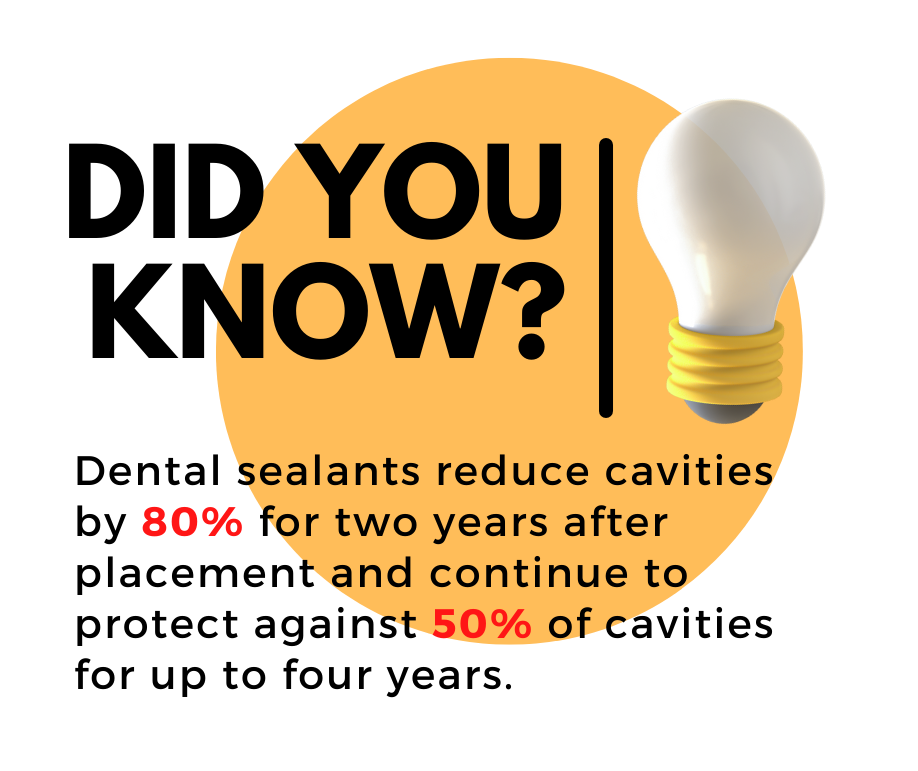by Celeste Terry, RDH at EXCELth Incorporated and Suzanne R. Keller, DMD
Are oral health and overall health connected or separate? Our healthcare system treats them as separate—but science and common sense continue to find direct connections between good oral health and the health of the rest of the body.
Often, when we set personal goals, becoming “healthier” tops the list. Being healthy involves the whole person—physical, mental, emotional, social and spiritual. Not surprisingly, dental disease is associated with many chronic diseases; when we keep our mouth healthy and understand its connection to the rest of the body, we can reduce chronic diseases.
A healthy mouth affects our life, body and overall health. An attractive smile enhances our ability to make friends, gain employment, find a life partner and advance our careers. But more than just a pretty smile, good oral health affects our ability to eat, work, grow, learn and thrive, thus impacting our overall health and well-being.
Oral health is essential to general health and well-being. Oral disease, such as tooth decay and gum disease can cause pain and infections that may lead to problems with eating, speaking and learning, which impacts social interactions and employment potential. The connection is real. Understanding that fact is critical to ensuring that everyone has an equitable chance to be healthy and thrive. In this blog, we’ll look at oral health across the lifespan, starting with pregnancy, through childhood, and finally, adulthood.
Oral Health Fundamentals
Cavities and Gum Disease
To better understand how oral health is important across the lifespan, it’s helpful to explain common terms. Dental cavities, dental decay or dental caries are the technical terms for holes in teeth, which are caused by a bacterial infection. Gums or gingiva have their own types of infection known as gingivitis and periodontitis. Gingivitis is a bacterial infection causing inflammation of the gum tissue, which can become swollen and bleed. When this inflammation is worsened by the body’s overactive immune response to this bacterial invasion, supporting bone and connective tissues are destroyed, resulting in periodontitis.
When these two common oral health diseases of teeth and gums get a stronghold in the mouth, bacteria can be carried by blood and saliva to other parts of the body and inflammation spreads. An untreated cavity can kill the nerve within a tooth, allowing bacteria to travel through the bloodstream and spread to vital organs, which can result eventually in death, such as in the tragic story of Deamonte Driver.
The National Institutes of Health state that there are 60 adverse health effects of gum disease, and people with serious gum disease are 40% more likely to have other chronic diseases. The most common adverse outcomes caused by oral inflammation include higher risk pregnancy, low birth weight babies, increased risk of heart disease and stroke, and poor control of diabetes. If you smoke, have a genetic predisposition to these diseases, take certain medications, and experience stress, your risk of poor health outcomes can increase.
From Decay to Infection
Decay is linked to bacterial dental plaque that lives in the mouth and produces acid. Acid is not a friend to teeth, and is a by-product of sugary or acidic foods and beverages.Without good oral hygiene, a healthy diet, and regular dental care, teeth will experience decay over time. If left untreated, such decay will progress, become painful, and the vitality of the tooth may be jeopardized, as well as compromising one’s overall health.
The Benefits of Preventing Oral Infection
Prevention and early intervention in the progression of such dental disease are essential in maintaining better oral health and overall health. Integration of dental and medical care is critical to accomplish this end. Most children in the U.S. do not see a dentist until they are about three and a half years old, despite organized dentistry endorsing “a recommendation for an age one dental visit, by the American Academy of Pediatric Dentistry and the American Dental Association. By incorporating oral health assessment, anticipatory guidance, use of fluoride varnish, and timely referrals to dental care into the 12-18 well-baby visits conducted by pediatricians and family practice physicians, children can remain decay free throughout their formative years and into adulthood.
The saying, “an ounce of prevention is worth a pound of cure” rings true for oral health and overall health. For example, dental sealants reduce cavities by 80% for two years after placement and continue to protect against 50% of cavities for up to four years. Sealant s are recommended for children as soon as permanent molars appear in the mouth around the ages of 6 and 12. The cost of dental sealants is far less than that of treating cavities, especially for children at high risk for tooth decay. If dental disease isn’t prevented in infancy and early childhood, the long-term costs of fillings and re-treatment become a lifelong financial and social burden.
s are recommended for children as soon as permanent molars appear in the mouth around the ages of 6 and 12. The cost of dental sealants is far less than that of treating cavities, especially for children at high risk for tooth decay. If dental disease isn’t prevented in infancy and early childhood, the long-term costs of fillings and re-treatment become a lifelong financial and social burden.
By preventing dental disease, overall health will be positively impacted. Conversely, the health system in the United States could save up to $100 million every year if dental offices screened patients for diabetes, hypertension and high cholesterol, then referring those with abnormal findings for further evaluation and possible treatment. Dentists often see teens more regularly than pediatricians, thus they are well positioned to recommend and/or immunize these individuals against the human papilloma virus (HPV), which is responsible for increasing numbers of oral cancers in young people.
Pregnancy: Effects of Dental Disease on Overall Health of Moms to Be
Pregnant women can pass bacteria to their unborn child during pregnancy, putting them at risk for adverse birth outcomes, such as low birth weight babies and preterm births. Dental decay is a common condition responsible for chronic inflammatory challenges in a woman’s body, which can affect the unborn child. Changes in hormones that occur during pregnancy can also aggravate a woman’s gums and lead to infection.
Babies born at a low birth weight or too early often have significant long-term health problems, including lung conditions, heart conditions and learning disorders. Expectant mothers with gum disease are up to seven times more likely to deliver low birth weight or premature babies. “Nearly 60 to 75% of pregnant women have gingivitis, an early stage of periodontal disease that occurs when the gums become red and swollen from inflammation.”
Babies and Children: Effects of Dental Disease
Bacteria in the mouth can be transmitted to others; for example, from a mother or caregiver to a child when using the same eating utensils or when a parent cleans a baby’s dropped pacifier with his/her mouth. It’s important to understand the value of early dental visits, good oral hygiene habits, a healthy diet and their impact on good oral health and overall health.

By age eight, over half of all children have a cavity in their primary (baby) teeth, which first erupt around six months of age. These primary teeth are needed for chewing, speech and socialization. When a cavity is left untreated, bacteria spreads deeper into the tooth, eventually onto other teeth, and can be passed to other people.
Children can not live their best life when experiencing pain. Attendance and productivity at school are impacted by oral pain. The Centers for Disease Control and Prevention states “on average 34 million school hours are lost each year because of emergency dental care. Over $45 billion in productivity is lost each year due to untreated dental disease.” Imagine the impact of pain on a child who cannot eat or sleep, cannot concentrate in school, while suffering one of the worst pains in the human body. The value of preventing that suffering is priceless.
Adults: Common Health Conditions Connected to Oral Health
What is it like to have decayed and rotting teeth, swollen and bleeding gums, bad breath and missing teeth—from a social standpoint? If you don’t have a healthy mouth, the world judges you. Employment opportunities are reduced for those with missing teeth in industries that interact with the public. The ability to make a good first impression can result in getting or losing a job opportunity. Putting your best foot forward and showing your best self may be good advice, but without income to address poor oral health and put your best smile forward, the chances of getting a good job are unlikely and limited. If you have missing teeth, people may assume you are ignorant, or not offer you positions with more authority or advancement possibilities.
Diabetes
Diabetes is a chronic disease with a connection between oral health and overall health. The American Diabetes Association states, “If you have diabetes, you’re at higher risk for both gingivitis and periodontitis.” Ninety-five percent of people with diabetes have gum disease, which leads to inflammatory challenges in controlling glucose levels and contributes to the progression of diabetes. Managing gum disease can result in better control of diabetes. Nearly one in five individuals with severe gum disease have Type 2 diabetes and don’t know it. Treating gum disease reduces inflammation and resulting glucose levels, thereby improving diabetic health and overall health.
Heart Disease
Over 90% of people with heart disease have periodontal disease. There is an association between the two diseases associated with the inflammatory process, bacterial plaque and other risk factors. Diabetes mellitus, aging, alcohol, obesity, race/ethnicity, socioeconomic status and smoking are risk factors shared by both heart and gum disease. The CDC states that one person dies every 36 seconds in the U.S. from heart disease. Over 650,000 people die each year in the U.S. from heart disease, and over 47% of adults 30 and older have some form of gum disease. Periodontal disease risk increases with age over 65, smoking, low incomes, and failure to complete high school. Given these connections, more needs to be done to reduce risks and prevalence of both diseases if we are to be a healthier nation.
Health Equity
Do we know who is more likely to have poor oral health? No one deserves to suffer with pain from untreated oral disease or with the negative impact to their overall health. Here’s what we know:
- The nation’s oral health has greatly improved since the 1960s, but not all Americans have equal access to these improvements . Some racial/ethnic and socioeconomic groups have worse oral health as a result of the social determinants of health—conditions in the places where people are born, live, learn, work and play. For example, some groups of people:
- Can’t afford to pay out of pocket for dental care, do not have private or public dental insurance, or can’t get time off from work to get to dental care.
- Live in communities where they don’t have access to fluoridated water or school-based sealant programs, healthy foods, and public transportation to get to dental appointments.
- Children from low income families are twice as likely to have cavities than those children from families with higher incomes.
- Sixteen percent of working age adults report the appearance of their mouths affects their ability to interview for a job. For those with low incomes, it increases to 29 percent.
- Lack of affordability and access to dental care plays a large role in oral neglect. In 2014, 2.4 million emergency department visits for non-traumatic dental conditions represented $1.6 billion in charges, with Medicaid being the primary payer for these visits. More recently in Maryland, “Although Medicaid members comprise only 17% of Maryland adults, they account for 54% of all the state’s ED visits for NTDCs and 46% of total cost.”
Regular preventive dental care is essential for good oral health so problems are discovered earlier when they are easier to treat, but many don’t get the care they need. More people are unable to afford dental care than other types of health care. Traditional Medicare does not cover routine dental care, therefore many individuals lose their benefits upon retirement.
Finally, many low-income adults do not have public dental insurance. Medicaid programs are not required to provide dental benefits to adult enrollees, so dental coverage varies widely from state to state. Currently, 15 states provide no coverage or only emergency coverage.
What Can Be Done?
We must work to reduce disparities in oral health by integrating oral health into chronic disease prevention and medical care. Two such interventions recommended by the Community Preventive Services Task Force of the U.S. Department of Health and Human Services include:
- School sealant programs that typically provide dental sealants at no charge to children who are less likely to receive private dental care. Providing sealants to the five million children from low-income families could prevent 3.4 million cavities over four years.
- Community water fluoridation as an equal and effective way to deliver fluoride to all community members regardless of age, education, or income. It also saves money for families and the US healthcare system.
We can help individuals and families understand and access the benefits that are available to them through programs like the Women, Infants and Children Supplemental Food Program (WIC), Medicaid, the Children’s Health Insurance Program (CHIP) and Medicare.
Join the Oral Health Progress and Equity Network (OPEN), a national social impact network that is 3,000 members strong. OPEN is represented across the national, state and local levels with members from every state in the country. OPEN members are rebuilding systems and creating social change, advocating for policy, organizing coalitions or building learning communities. Be part of collaborating and sharing perspectives, knowledge, and experience. There’s no cost to join the Network and its online platform, OPEN Communities. Learn more by following us on Twitter, Facebook and LinkedIn.
End Notes
- Centers for Disease Control and Prevention [CDC] “Power of Prevention the Health and Economic Benefits of Preventing Chronic Diseases”
- American Dental Association Council on Access, Prevention, and Interprofessional Relations, 2006
- CDC HPV and Cancer Statistics Better oral disease prevention improves health, can save lives, and reduce financial costs for both individuals and society.
- CDC Disparities in Oral Health
- Carequest Maryland Emergency Department Visits for Dental Conditions
- Center for Health Care Strategies Adult Oral Health Fact Sheet







